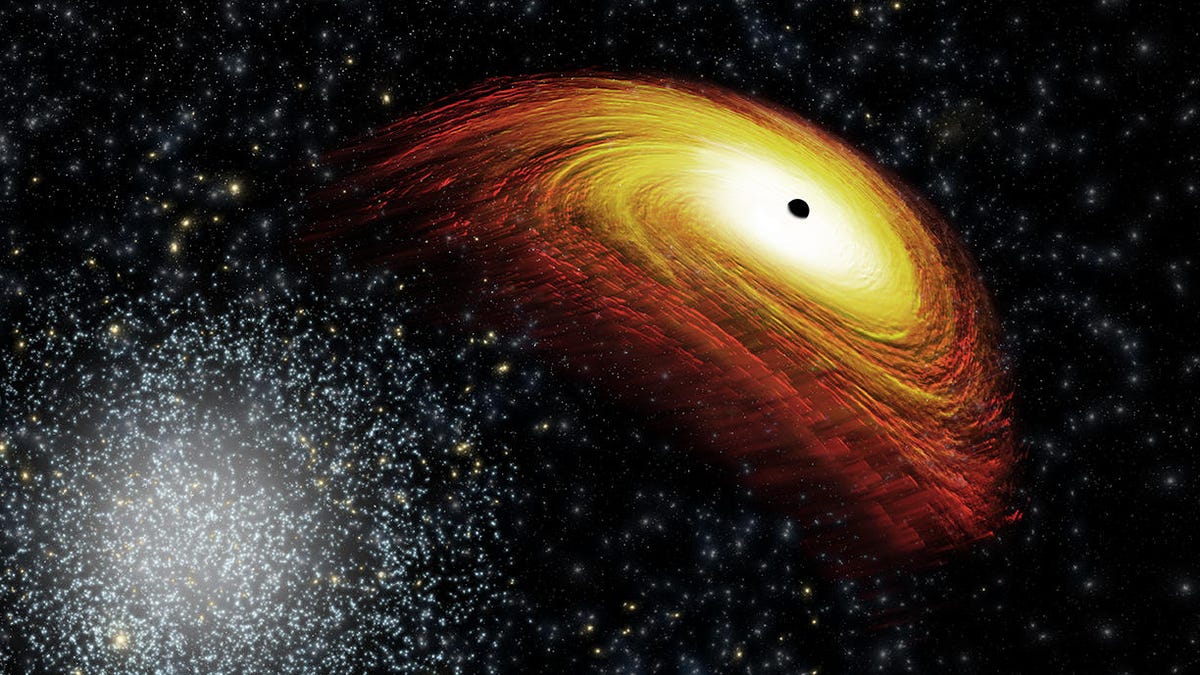Scientists measure a black hole that's surprisingly tiny (for a black hole)
Astronomers looking at the center of a dwarf galaxy discover a dwarf black hole stirring things up.

This is an illustration of a black hole scientists believe may exist based on data from NASA's Chandra X-ray Telescope and other observatories.
Black holes are among the most massive, powerful and mysterious objects in existence, but there are also runts among the supermassive matter-suckers.
When a team of astronomers set out to measure the black hole at the center of the dwarf galaxy NGC 4395, they were surprised to find it 40 times smaller than previously thought.
While a shrimp on the mind-blowing celestial scale at which black holes exist, this particular one is still 10,000 times the mass of our sun, so it's not exactly a cute little baby black hole you want to bundle up and take home with you.
Measuring this shockingly small black hole is important to astronomers though, because it fills in some of the gaps of what is going on in smaller galaxies. The current understanding is that a supermassive black hole sits in the middle of every galaxy as big as or bigger than the Milky Way.
"This regime of dwarf galaxies is largely unexplored when it comes to the properties of their nuclear black holes," University of Michigan astronomer Elena Gallo said in a release. "We don't even know if every galaxy has a black hole. This adds a new member to the family of black holes we have information about."
Gallo is co-author of a paper detailing the findings that was published on Monday in the journal Nature Astronomy.
She says having data on the size of smaller black holes could also help explain the mystery of how some of the big boy supermassive black holes seem to have an outsized effect on their galaxies, making their presence "known" beyond the scale of their gravitational pull.
"There's no reason why stars that live at orders of magnitude larger than the area where black hole gravity dominates should even know that there's a black hole in their galaxy, but somehow they do," Gallo said.
Seeing if the same phenomenon happens with smaller galaxies and their black holes could help unravel the mystery.
The dawn of the age of tiny black holes in our cosmic consciousness doesn't mean they're any less terrifying, though. Like even the youngest of velociraptors, they would still tear you to shreds if you got close to one.

